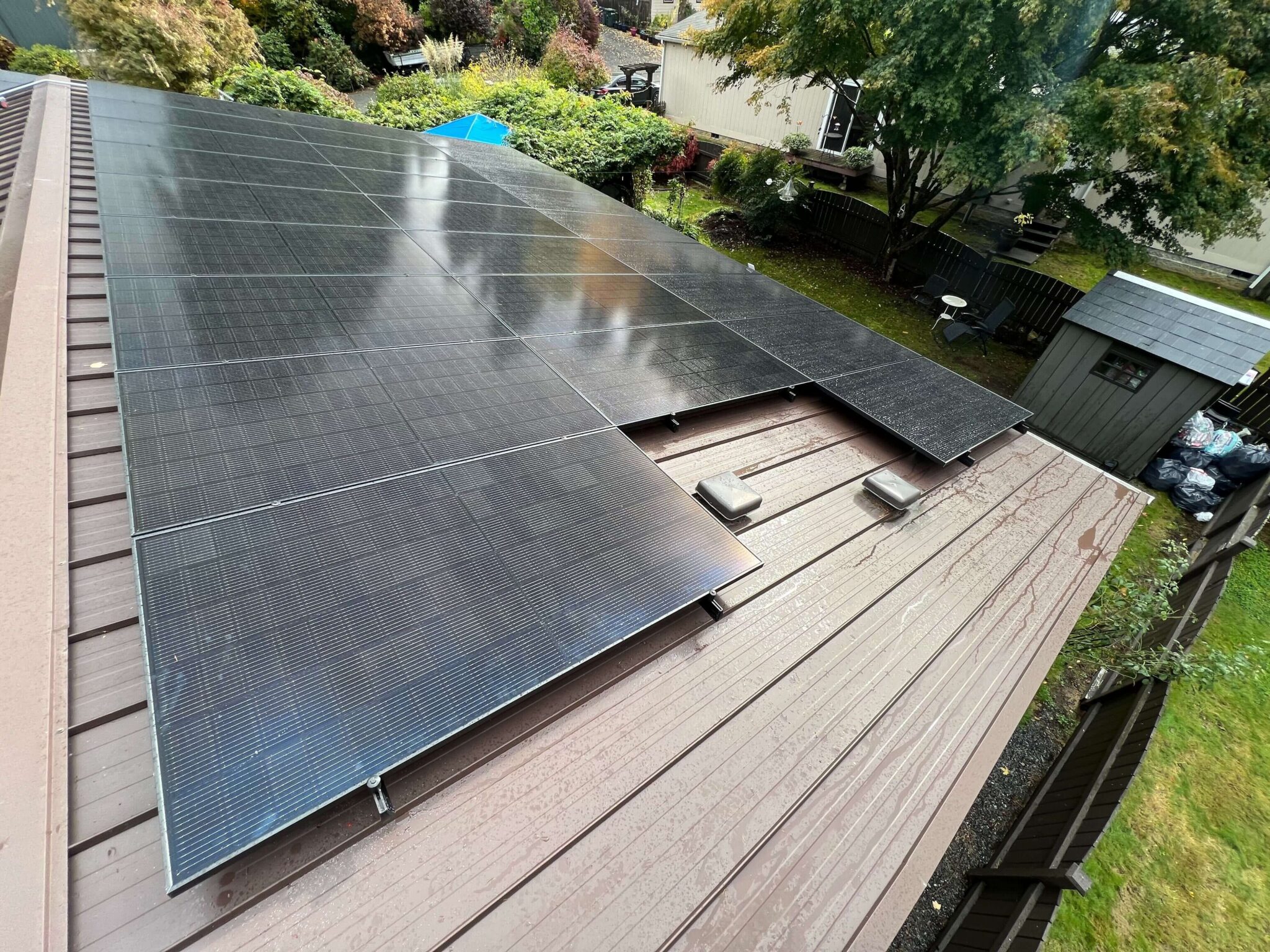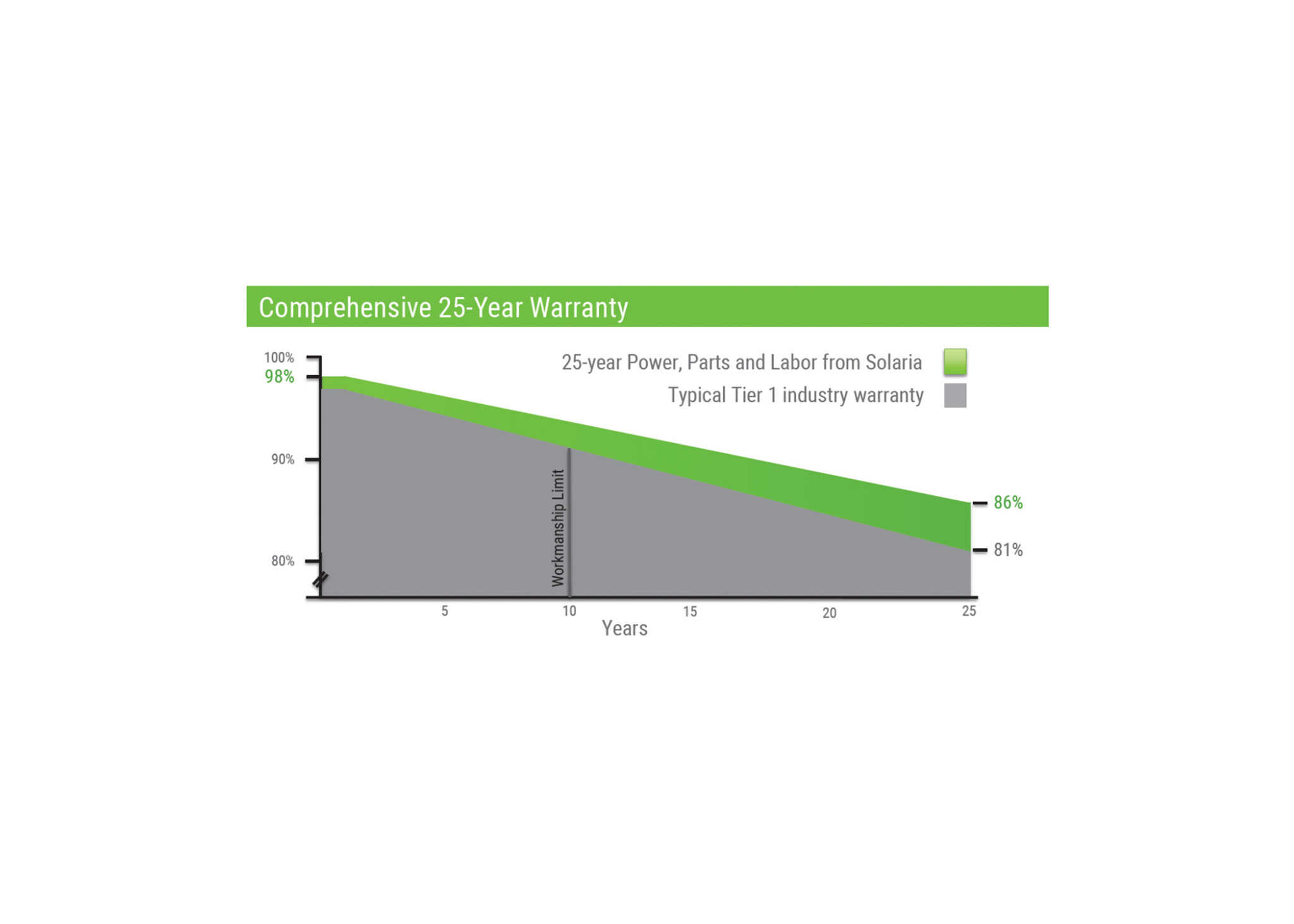Shining on some solar facts
Photo (light) and Voltaic (voltage) combine to make photovoltaics or PV. Now, we’re revolutionizing our world by tapping into the near-limitless energy that shines daily through solar PV. Dive into this fact-filled blog to learn why solar panels are the way they are and where we’re heading with solar PV in the future.

Harnessing energy from the fusion reactor in the sky
This blog will interchangeably refer to solar panels as modules or vice versa. Although technically, a solar module is a single unit that produces between 200 – 420 watts of power for residential applications. A set of modules refers to as a panel, and then the whole system of solar panels is a solar array. For this blog, though, we will use solar modules and panels as the same thing.
Crystalline PV
Crystalline and primarily Monocrystalline silicon solar panels are the most commonly used type of solar panel technology. It helps that silicon is an abundant element, and the manufacturing of monocrystalline solar cells has increased efficiency and decreased costs. Polycrystalline is cheaper to manufacture as it’s a more straightforward process but results in a less efficient solar cell.

Other solar energy tech.
Other solar energy technology includes thin-film PV and concentrated solar power. Thin-film PVconverts solar energy similarly to crystalline PV and produces DC electricity, although it uses a different substrate and compounds to generate energy. Concentrated solar power (CSP) reflects the sun’s energy to heat a central unit to create steam that turns a turbine creating an alternating current through electromagnetic induction.

What is a photon?
Photons are a particle-wave type of electromagnetic energy that travels through space into our atmosphere. Photons carry packets of energy that hit electrons from positively charged solar cells to negatively charged cells in solar panels. That movement of electrons travels through a middle neutral layer, and then electricity is carried in a one-way direction, thus DC energy.
Performance over time
Module degradation is a characteristic of all solar panels. Constantly subjected to the elements and sun rays, panels will lose some efficiency over time. Thankfully, this is at most 1% a year for the modules we use. In solar module spec sheets, you can see the rated performance in year 25; since the modules have a warranty until year 25, it’s essential to know the expected performance over time until year 25. Solar modules can keep producing after year 25 but at a reduced capacity, saving you money as electricity prices increase yearly.
Here you can see Solaria’s PowerXT module 25-year power warranty backs up their claim that at year 25 their solar module will still produce at 86% capacity.

Solar Windows
In residential and commercial applications, you’ll more than likely receive a bid to install monocrystalline solar panels, especially in commercial buildings that have large flat rooftops. ClearVue PV solar windows are an exciting PV technology developing in Western Australia.

Building-integrated PV solution
ClearVuePV is leading the charge in creating solar windows that absorb non-visible light rays like the UV spectrum and turn them into clean energy. Their solar windows can harvest light with a 3.3% efficiency, delivering a minimum of 30 watts per square meter at 70% transparency. Solar windows are the solution for sky-rise buildings that are covered with windows but don’t have any real rooftop space for solar.


